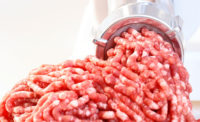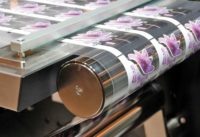Designs On Versatility
By Sam Gazdziak,
Senior Editor
Senior Editor
Meat and poultry processors want their plants to do more than just produce high-quality products.
While the year 2006 may be a down year for some companies in meat and poultry processing, there has been enough growth and expansion to keep construction firms busy. Ground is being broken across the country, with new plants popping up and existing facilities expanding.
“The market is definitely growing,” says Mark Sherwood, director of marketing for the Stellar Group, headquartered in Jacksonville, Fla. “It’s a continual re-evaluation of processes to improve the bottom line. Therefore, the market remains pretty steady.”
Construction is occurring across the industry. Food Tech Structures, based in Hanover, Mass., has designed and built facilities for major processors like ConAgra Foods and smaller companies who are market leaders in their region. Michael Golden, executive vice president, says that some smaller companies are capitalizing on marketplace niches to fuel their growth. “Of course, foodservice is also driving it, and the fact that Americans are continuing to eat out more at restaurants,” he adds.
The meat industry’s versatility is another growth factor in construction, Sherwood points out. Processors aren’t just delivering cuts of meat anymore. The popularity of ready-to-eat (RTE) products, for example, has brought new opportunities for meat and poultry processors. “All of the processors are looking for different ways to integrate meat into their RTEs, so that is definitely providing some growth for the meat industry,” he says.
Sherwood adds, “I think the [government] standards are also causing a lot of meat and poultry processors to evaluate their current situation, whether to continue to take chances or make the changes that are necessary to protect the food safety and improve their efficiencies.”
Meat plants may have many similarities with food-processing plants in general, but there are some notable differences. The interior surfaces need to be very durable, notes Joe Bove, vice president of engineering for The Stellar Group. “On the slaughter side, with all the blood contact with building materials, and on the ready-to-eat side of the business, where you have to kill all the bacteria, there’s a lot of chemical contact,” he notes. “A meat plant has generally a higher quality of finish in the interior.”
Location, location, location
Once a company makes a decision to construct something new, the first option is to decide where to build. Obviously, expanding or renovating the existing facility is always an option, but it may not always be the most cost-effective option.
“With the price of diesel fuel now, if you’re not logistically centered to minimize your transportation costs, it doesn’t make a lot of sense to simply expand your existing facility,” Golden states.
To help a company decide where to build, Food Tech Structures can look at a processor’s customer files and, by zip code, determine where the product is going. From there, it’s a matter of analyzing what the most cost-effective solution is. “We just did this for a client, to determine if it was more cost-effective to expand its Chicago facility to service the mid-Atlantic and New England market, or build a new production plant and distribution center in the Northeast.” The analysis determined it would be better for the company to open a New England location, and the company was able to get some tax incentives for building a new facility in Pennsylvania.
A similar decision led American Fresh Foods to open its new plant in Thomasville, Ga. The plant, which opened last fall, is a 75,000-square-foot facility, dedicated to bring fresh and frozen ground beef to customers in the Southeast.
“We had a specific geographic area that we were looking in,” says Jeff Sterling, vice president, sales. “[We had] some customers requesting that we have a way to produce product in the Southeast, and also it added additional capacity to our group of plants, as our business is growing.”
The state-of-the-art plant offers the latest in grinding and packaging capabilities for both foodservice and retail products, as well as modified-atmosphere packaging. It also has additional square footage available for future growth. “Thomasville stood out. It was determined that a new plant made sense, and that we could get everything in there that we needed,” Sterling says.
When Grand Prairie Foods of Sioux Falls, S.D., made the decision to change its product lines, it decided to renovate its existing plant. “We got rid of two smokehouses and three ovens, and we’ve moving more into meat-filled dough bakery items. We’re more efficient at doing those items, and at higher margins,” notes David Homann, vice president of operation.
The company’s traditional business had been ribs, smoked beef and pulled pork. Its new items will include buttermilk biscuits with sausage gravy filling, and oven-baked bread with Philly cheese steak, barbecue beef or pepperoni pizza filling. The conversion included removing a section of wall to remove the ovens. Homann says that the project will be completed by August, and that the plant will be producing at capacity about a year after that.
Both relocating and expanding have their own risks and expenses. Bove says that the Stellar Group produces feasibility studies, which considers all the costs and concerns and presents a processor with a couple of alternatives.
“We look at, with the help of [the client], how we could add on to a facility and still maintain operation while expanding. If we’re in a new location, we have to look at the outside influences on the project, like water availability, electric availability, wastewater availability,” he explains. Those utilities need to be in place, or they have to be put in place. Sometimes, that process can take longer than actually constructing the facility, Bove says.
Safe and secure
Whether it is a new location of the expansion of an existing plant, there are certain things that all owners require. “Plants are always interested in flexibility of their space,” notes Sherwood. “But safety is obviously by far the No. 1 [concern], and security of the facilities are also coming into play more and more.”
Bove notes several ways that plants can be designed to be employee-friendly. Using the proper floor finishes is one key to avoiding accidents. “In a meat plant, you have a lot of fatty grease, so there’s a potential to slip and fall,” he says. “There are also heavy vats that tend to be pushed through the plant. Having the right floor surface allows you to push the vat easily but not slip and fall.”
Steps also can be taken to separate employees from material-handling equipment, either by handrails or guardrails, or warning stripes located on the floor. Material-handling devices can be employed to eliminate unnecessary lifting or reaching.
Given the sheer amount of federal and state regulations that exist to protect the food supply, a meat-processing plant has to be designed with some very specific standards in mind. “The facility [should use] food-grade materials, be easily cleanable and washable,” says Dr. Susan Barefoot, associate dean for Food Safety & Nutrition at Clemson University. “Keep the sanitation materials separate and isolated from processing areas, and cook areas isolated from kill areas, and kill areas isolated from breakdown areas.”
Dr. Dan Lafontaine, director of the South Carolina Meat & Poultry Inspection Department, says that when a processor looks to build or expand a facility in his state, he recommends that they bring him a floor plan. That way, he can review the product flow and make sure that any potential food-safety errors are eliminated.
“Another big issue is the need for proper drainage,” he continues. “Whether it be Listeria in fully cooked products or any other pathogens, you’ve got to be able to properly clean your equipment and your walls and floor. Without the proper floor drains and the associated plumbing, you can’t get there from here.”
Along with the floors, the ceiling is another area that has to be designed and constructed properly to prevent food-safety problems. Lafontaine notes that the coolers, freezers and processing areas all require some degree of refrigeration. During the summer in many places, the outside temperature can reach into the 90s, while the coolers are in the low 30s. “You’ve got a temperature differential of 50 to 60 degrees,” he explains. “If there is a poor barrier of insulation, you’re going to have condensation dripping off the ceilings and rails.” The proper amount of insulation can reduce or eliminate that condensation and the food-safety issues that come from dripping water.
There are many things that construction firms can do to improve the food safety in a plant. Sherwood says that the materials used, from the floors and walls to lighting and utilities, should be long-lasting and durable, resistant to pathogens and bacteria. “That also means it’s going to affect the bottom line and the cost,” he notes. “The better the finishes, the higher the cost, but it gives you another opportunity for protection.”
One of Stellar’s most recent projects was a 152,000-square-foot facility for Dakota Provisions in Huron, S.D. It has the capacity to process eight million live turkeys per year and also further-process pre-sliced and ready-to-eat meats like turkey, beef, pork and chicken. Specific landscaping details were incorporated to prevent the harboring of wildlife and insects, and several air, drain and layout specifications were implemented to ensure the separation of raw and cooked meats, preventing cross-contamination.
Features also can be added to a facility to make it more secure, Golden says. “We’re doing a lot more with vehicle circulation and parking, to make sure that cars and trucks are where they’re supposed to be,” he says. “People are putting in much more elaborate security systems like card access, so that certain employees only have access to certain parts of the plant, and video surveillance.”
The proper use of fences, signs and lighting can improve a plant’s security, Barefoot adds. While it’s not necessarily strictly related to construction, she notes that the biggest part of security is personnel. When new employees are being hired to work in the new plant or new area of the plant, she advises knowing their backgrounds ahead of time. “Know who’s in the plant at all times, and limit access to others,” she says.
In the wake of continuously soaring energy prices, processors are looking for ways to keep their costs low in that area. “There are still areas where energy companies are offering rebates for refrigeration systems to be designed in the most energy-efficient manner,” says Golden. “If that’s the case, there are a whole host of computer controls for energy management, both in the electric load and the refrigeration load, which can be employed to significantly manage and reduce costs.”



Report Abusive Comment